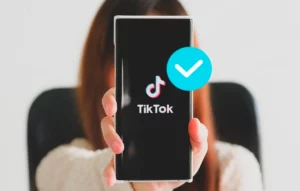
It’s a fact that your marketing campaigns won’t see success without a solid game plan backing them.
A frequent reader of us would know how much we press the idea of creating a unifying strategy before doing anything.
And the same goes for the creative brief. The need becomes more crucial for the marketers working in “silos” cultures or home settings.
Without proper documentation, sharing client briefs from account managers and creative directors to designers, copywriters, and social media marketers can be like playing Chinese whispers.
A creative brief template is a solution to create a unifying document from which every key player of a project or campaign can source information, direction, coordination, and inspiration.
However, a poor creative brief coming from clients can leave your team confused and the campaign uninspiring.
So, let us discuss the step-by-step guide to make a formidable creative brief template for your internal team and clients.
Or make things simpler for yourself by downloading our fully customizable creative brief template now.
What is a Creative Brief Template?
A creative brief template documents the essence of a marketing campaign or a creative project from the onset.
It outlines essential information like project goals, messaging, creative guidelines, and crucial insights that make it easy for team members to quickly understand and execute the campaign tasks.
Consider it a document translating the vision, goals, and ideas of the clients into written words.
Look at this creative brief example of Netflix.
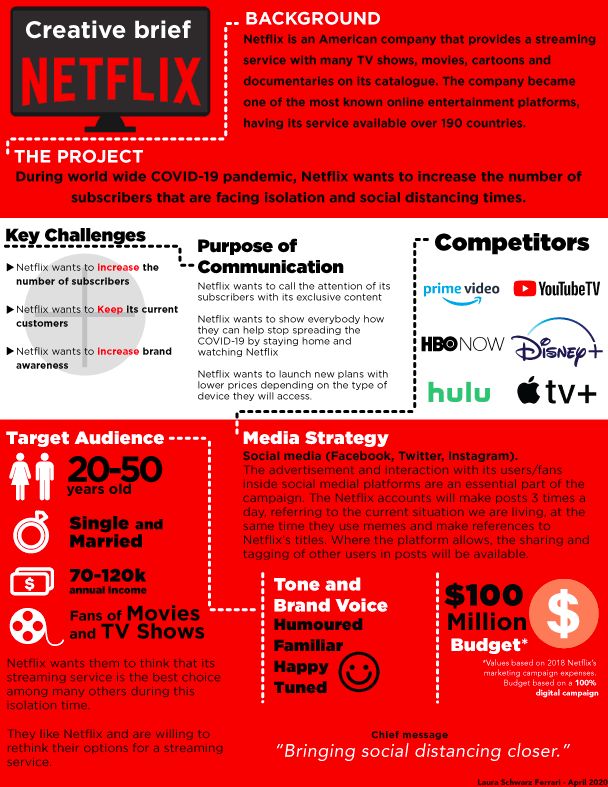
However, the creative brief can come from either side – client or agency.
Sometimes clients have an in-house creative brief explaining the nitty-gritty of the company mission, positioning, and plan guidelines.
On the other hand, a marketing agency can also give their clients a creative brief template to take all the necessary information to comprehend the work scope.
No matter who you are, it’s essential that your start creating your creative brief template after discussing it with your internal team. It will give you enough information to create a formidable template with key players’ crucial and practical insights.
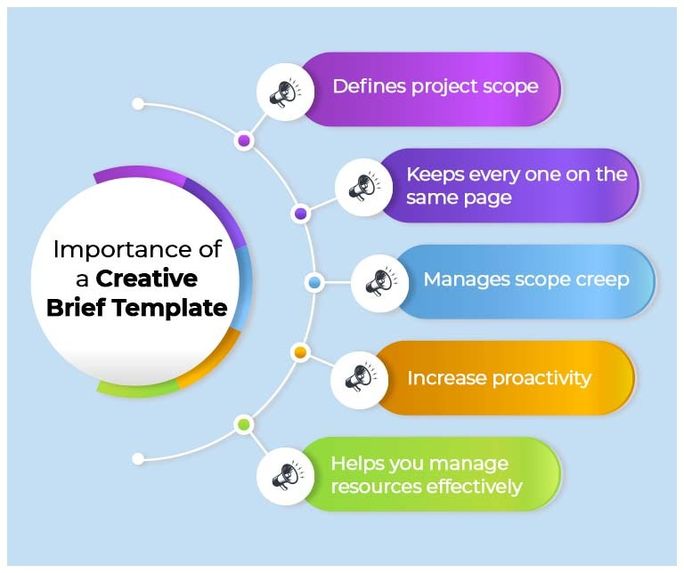
What to Include in Your Creative Brief Template?
All creative projects aren’t the same. Similarly, the creative brief you will create for them will vary too in terms of information.
A creative brief is generally a small document that contains information to suit the needs of clients and the agency.
However, there are a few must-haves that every creative brief template generally carries. So, let us pin down the most essential elements of a creative brief template.
- Client and campaign introduction
- Campaign overview
- Campaign goals
- Team introduction
- Campaign assets and deliverables
- Target audience
- Creative considerations
- Competitor analysis
- Budget breakdown
- Deadlines
While a big strategy document can be of multiple pages, a creative brief template generally doesn’t go more than two to three pages.
Remember, it has a “brief” included in the name. So try to be just that.
How to Make a Creative Brief Template?
Now that you know what goes into making a creative brief template, it’s time to make one for yourself.
But creating a creative brief from scratch isn’t an easy task. Researching and managing information for all the essential elements with brevity can be a pesky endeavor.
So let me take you through the step-by-step process of understanding and organizing each element of a creative brief template.
Wait, there is more.
Get your hands on our free creative brief template to effortlessly perform each step to the tee.
Step 1: Introduce the Brand and the Campaign
Firstly, you have to lay the base by coining a campaign title. It’s an obvious but essential deet to simplify the execution and transaction of ideas among stakeholders.
Make it as creative, conscious, and on-point as possible. Usually, the name of the campaign comes from the campaign key message, call to action, or slogan.
“Give a Hand to Wild Life – a World Wide Fund for Nature (WWF) campaign.”

Similarly, the introduction or the background brief of a client you are working for is another sacrosanct detail you must include in the template.
For the agencies, a company background will help differentiate between the tons of similar creative briefs hanging in their inbox.
So, how to write a good company background?
You can simply talk about the company history for the background brief. Or better, you can incorporate the project at hand into it too. Start with the company mission and then talk about how it led the brand to this particular campaign.
Step 2: Give a Brief Campaign Overview
In the next step, clarify more things about the campaign.
For instance, talk about the customer problem your campaign will address. First, explain the problems and then introduce how with this campaign, you are going to solve those problems.
Addressing the problem will help you craft the campaign’s key message. The problem and solution narratives help stakeholders reach the campaign’s core and create inspiring content.
Take a look at the corner in our template where you can easily create a cogent campaign overview.
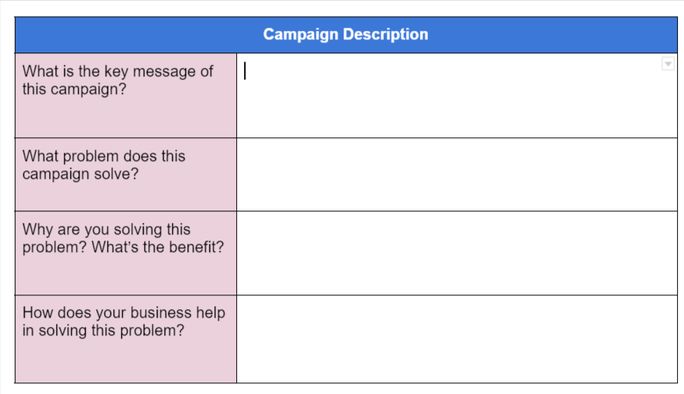
Your campaign overview can also talk about the bigger picture. Is your campaign part of bigger project? Mentioning such details is essential to maintain overall messaging consistency.
Step 3: Highlight the Project Goals
Indeed, your client wants something in exchange for all the money they put into the campaign..
At this point, you need to define their business needs. In other words, you need to write down their campaign goals.
Including goals in the brief gives your team a motive behind their head while crafting the assets for the campaign.
The best way to set a goal for your campaign is by using the S.M.A.R.T goal technique.
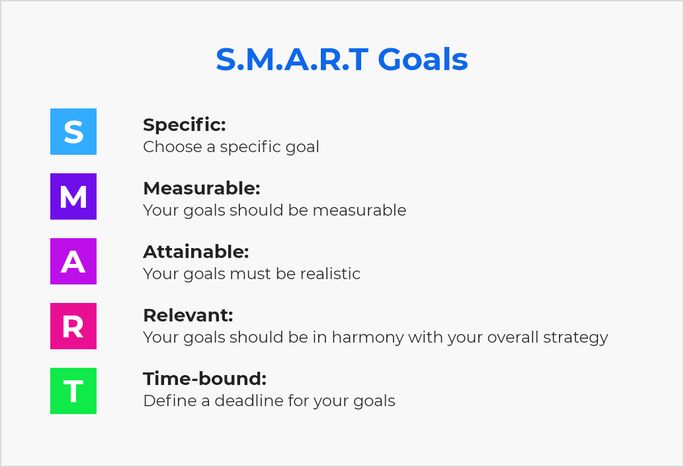
Step 4: Introduce the Stakeholders
Now, it’s time to figure out which team player will be working on what tasks? Here, you note down every person who will be working in the campaign’s making.
No matter how big or small the part is, make sure your whole team and client know every stakeholder. Keeping this information transparent makes the collaboration easier and faster.
You can create a grid that defines the roles and responsibilities of every team member from different departments. You can divide the team structure on the basis of the following roles:
- Decision Maker
- Approver
- Support
- Consult
- Informed
Step 5: Dive Into the Campaign Assets and Deliverables
The crux of a creative brief template is the section where you briefly mention the campaign assets and deliverables requirements.
It’s the first thing your creative team will set their eyes on. So make sure you list out every single deliverable needed for the campaign.
Also, use this section to describe all the other creative considerations, such as:
- Tone of voice
- Messaging notes
- Brand positioning
- Brand aesthetics
- Technical requirements
Peek at the section in our free creative brief template to help you note down all your creative requirements.
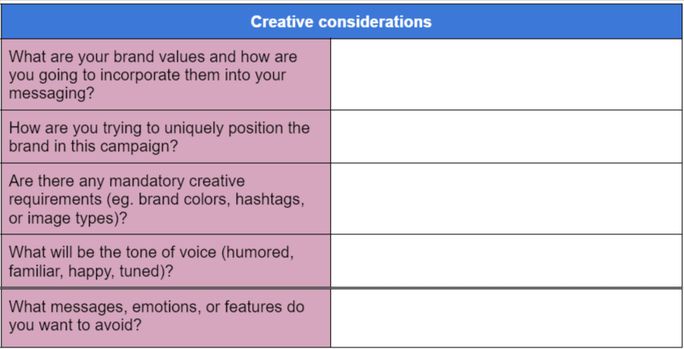
Step 6: Identify the Target Audience
The key to creating great content is first understanding who will be on the receiving end. In other words, who is the intended audience for your campaign?
Having a perfect picture of the buyer persona in mind will aid your team in exploring creative ideas that resonate with the target audience.
The best way to find out about the target audience is to prepare their persona. Here is some information you should note down to create one:
- Age
- Gender
- Location
- Work profile
- Interests
- Preferred networks
- Behavioral traits
- Pain Points
Step 7: Perform a Competitor Analysis
Your brief must cover the analysis of your competitors. A report on competitors’ campaigns will give your team a great starting point.
Once you know what your competitors are saying and doing, you will become more confident in creating a unique voice distilled from all the mistakes your competitors have made.
So make a list of your competitors and gauge their campaigns to list all the bad and good aspects that you can use to inform your campaign.
Step 8: Finalize your Budget and Timeline
Finally, include the campaign budget and timeline in the template.
Defining a budget from the start is an excellent practice to manage your expenses while performing tasks in the middle of the campaign. It keeps you on track financially and aids your decision-making.
Similarly, creating a timeline helps execute and manage tasks better. While making the timeline, you need to consider all the feedback, subtasks, and multiple reiterations you will perform.
Are you ready to brief?
A creative brief is a critical document to get your client’s visions and team efforts aligned and inspired from the very first day.
Whether you are an agency trying to put the bewildering asks of the client into a structure or a team leader trying to make a legendary campaign for your brand, a creative brief template should be part of your campaign development process.
Remember to connect with your key stakeholders before printing out your template page; they will show you gaps and information that you shouldn’t miss.
You can use our free creative brief template, ready to be filled with details of your next product, marketing, or advertising campaign.
If social media is an essential part of your campaign distribution plan, then look at our best-in-class scheduling tool.
With SocialPilot, simply schedule posts for multiple networks at once and watch them go live on time automatically.
Start your free trial today!


